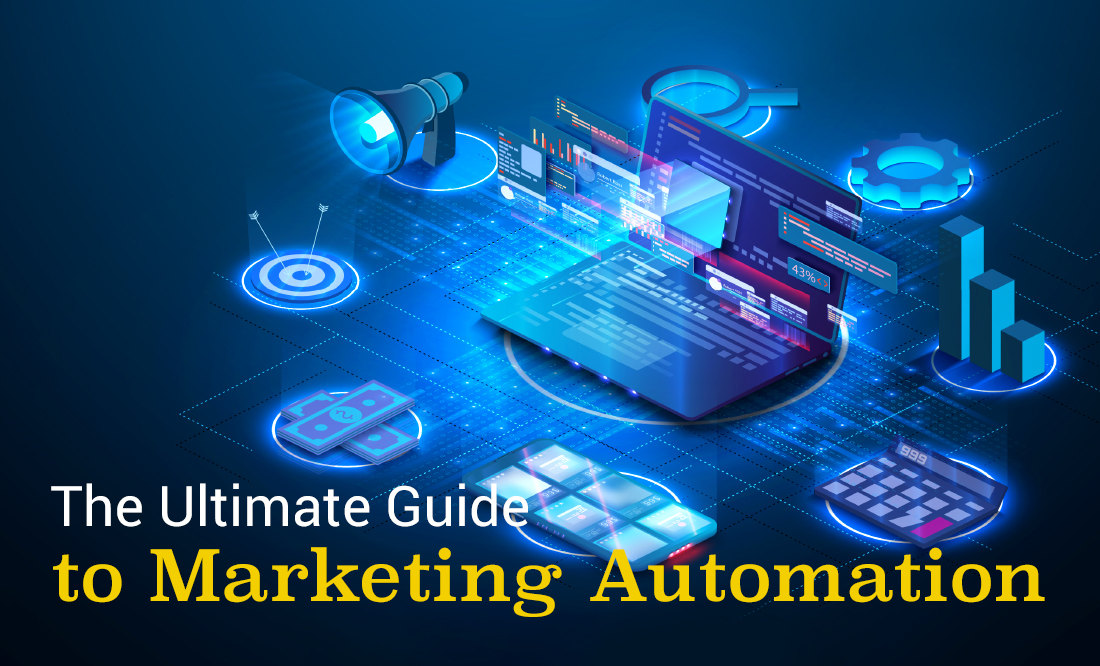Marketing automation refers to the streamlined approach of employing software and online tools to automate repetitive marketing tasks. This technique’s essence lies in its title: automation is harnessed to simplify routine marketing responsibilities.
In the landscape of 2023, significant marketing automation trends revolve around the integration of artificial intelligence (AI), machine learning, and data analytics. These advancements are aimed at enhancing campaign efficiency, refining internal workflows, and elevating both consumer engagement and revenue generation.
Imagine sending an email to a customer when their credit card expires, prompting them to update their payment information. Another instance could involve a social media scheduler that systematically republishes your most popular content. These examples exemplify marketing automation in action. By utilizing these tools, marketing tasks are efficiently managed with minimal manual intervention.
What is Marketing Automation?
Software that automates typical marketing chores eliminates the need for human intervention. Email marketing, behavioural targeting, lead prioritisation, and personalised advertising are examples of typical marketing automation workflows. Teams can collaborate more effectively, deliver more individualised, pertinent material to prospects and consumers, and save time by automating these tasks.
By creating workflows that will complete the task for you (automatically! ), you can automate. Each marketing automation pipeline will initially consist of a:
- Trigger: A requirement for automation (for instance, leaving their online shopping basket empty).
- Action: What your marketing automation platform carries out as a result of the trigger (for instance, sending the shopper an email about their abandoned basket)?
Automation in Digital Marketing
The various marketing jobs that you may automate with the correct tools are referred to as digital marketing automation processes.
- Email marketing: Using automated processes, email marketing is a potent marketing automation technology that enables you to send the appropriate message to the appropriate audience at the appropriate time. This is incredibly effective at nurturing leads and ultimately generating both new and repeat business from clients.
- Social media management: Social media automation involves utilising specialised technologies to optimise social interactions. This can involve pre-planning social media updates or reposting well-liked content.
- Lead tracking and nurturing: Based on the user’s position in the buyer journey, automated lead nurturing involves sending follow-up emails and transferring pertinent information. With the appropriate information, businesses may reach potential prospects at the ideal time.
- Monitoring performance: Automated monitoring of performance entails continuously comparing performance against KPIs or performance indicators in real-time. This will enable you to immediately pivot to increase your ROI by identifying subpar performance or budgetary problems.
- Customer onboarding and retention: Automated customer onboarding aims to increase customer retention rates by building a structured experience that leads new customers through each phase of your onboarding programme without requiring any manual effort.
- Automations lessen strain and stress: A staggering 80% of marketers claim to feel understaffed and overworked. One of the main advantages of marketing automation is that it frees up your team members’ schedules and saves them time, allowing them to stop feeling overwhelmed by their to-do lists and devote their time and attention to more important tasks.
- Automation offering great ROI: If you’re going to do something, you want it to be effective, and automation offers a tremendous ROI. Marketing automation, fortunately, provides a favourable ROI rather rapidly. Within a year, 76% of businesses see a return on their marketing automation investment. More impressive still? Within six months, 44% realise a profit.
Marketing Automation Tools and Platforms In Digital Marketing
We’ll examine a number of marketing automation tools. These pieces of marketing automation software are made to increase efficiency and insight, which ultimately results in progressively better promotional effects.
- Recognise your audience. Knowing your audience inside and out cannot be emphasised enough. Determine their location, interests, and behaviours as well as their typical demographic profile.
- Establish the tone (and maintain it!) Your company’s ability to connect with its audience through your narrative voice is crucial. You can choose a formal, corporate tone or a friendly, conversational one depending on the audience you’re writing for.
- Remain human Your emails may be sent by robots, but the content requires the creativity of a human author. Create communications and create marketing emails so the recipient feels as though they were the only ones who could use them.
- Combine it Avoid being bored with your content! Leads will stop caring about your brand if they consistently see the same thing.
- Stay current Although trends are ephemeral, if you follow them at the correct time, you may attract the attention of potential clients.
- Utilise A/B testing It’s possible that your business currently uses A/B testing to evaluate marketing initiatives, but there are several advantages to automating the procedure.
- Put the customer experience first The success of automation ultimately hinges on how your customers view it. Utilise customer experience mapping to collect relevant data at various stages of the process and establish feedback at key touchpoints.
The following ET special from 2023 provides their research perspective. HERE



